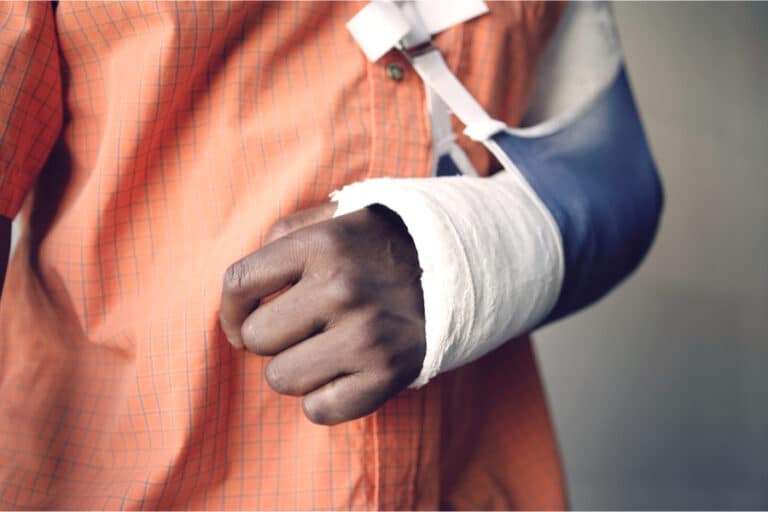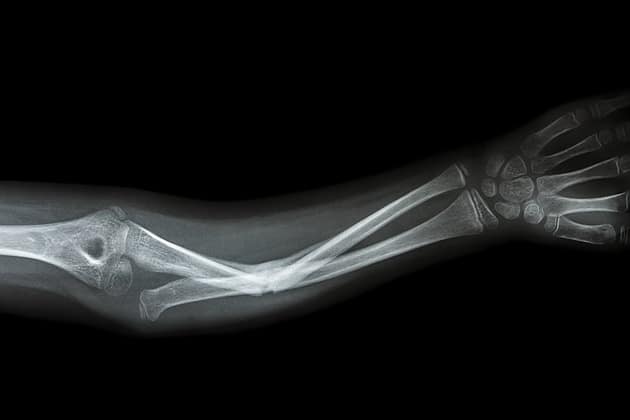This website uses cookies so that we can provide you with the best user experience possible. Cookie information is stored in your browser and performs functions such as recognising you when you return to our website and helping our team to understand which sections of the website you find most interesting and useful.
Fair Oaks Orthopedics – Fairfax VA

Did You Break Your Arm?
A snap or a loud cracking sound is usually the first sign your arm is broken.
Your arm also may look deformed, swollen, bruised or be bleedling. You may feel extreme pain, or increased pain with movement. Most patients lose the use of their arm.
Is it also possible that you have broken your arm and not feel some or all these symptoms. Even if the break or fracture is small, this doesn’t change the fact that you have a broken arm. This is where proper diagnosis and treatment is very critical.
Delays in medical attention can complicate the healing of your arm fracture, as well as the care, repair, and recovery.
Broken bones are known as a fractures. Any bone in the arm can be broken, but common areas for fractures in your arm are:
The Wrist, Distal Radius Bones
Forearm Bones (Radius & Ulna)
Elbow
Humerus
Shoulder
The word fracture is a medical term for any break in a bone. A fracture can vary in severity from compound fractures where the bone’s broken end punctures the skin to an open wound to hairline fractures, which are small cracks in the bone’s surface that are contained within the arm. Bones can fracture into one or several different pieces.

Contact Expert Orthopedic Doctor, Dr. Stephen W. Pournaras, Jr. treating fractures & trauma to your arm.
Heal safely and correctly. Urgent Care Appointments available.
Frequently Asked Questions About Broken Arm Fractures
- If you are expiriencing severe pain, that increases with movement
- Swelling, Bruising, Bleeding
- Odd shape or deformed – such as a bent arm or wrist
There are two main types of fractures – open and closed.
An open fracture is when the broken bone comes out through your skin causing an open wound. This is a very severe fracture and surgery is required to reposition the bones and close the wound.
A closed fracture is when your bone is broken but it does not come out through your skin.
This is the most common of the two. Closed fractures are usually treated non-surgically.
- Compound Fracture – The broken bone pierces the skin of the arm causing an open wound, this is a serious condition that needs immediate treatment to put the bone back into place and to decrease the risk of infection.
Within the closed fracture category, there is a variety of different fractures.
- Closed Fracture – The skin surrounding the break is not broken.
- Displaced Fracture – The bone fragments on each side of the break and isn’t aligned. Surgery is usually required to realign these fragments.
- Comminuted Fracture – The bone is broken into pieces, and may require surgery.
- Greenstick Fracture – The bone cracks but doesn’t break all the way.
- Buckle (Torus) Fracture – One side of the bone is compressed, which causes the other side to bend (or buckle). Most common in children.
The bones in your arm can break in several ways. They can crack slightly or can break into many pieces.
- Overuse – Repetitive motions can tire your arm muscles and place excessive force on the underlying bone (stress fractures in athletes)
- Trauma – A car accident, slip & fall, or sports injury (examples)
- Osteoporosis Arthritis – This medical condition weakens your bonesand makes them more prone to fractures
Dr. Pournaras will examine your arm for tenderness, swelling, deformity or open wounds. After discussing your symptoms and how the injury occured, X-rays will be done to determine the location and extent of the break. With severe fractures another scans, such as an MRI, might be used to get more detailed images.
Each type of fracture will cause slightly different symptoms and will require slightly different treatment. Dr. Pournaras will examine you and the results of X rays (imaging tests) to determine which kind of fracture you have and what the best course of treatment is.
Broken arm treatments depend on the type of break that occurs. Healing time often depends on a variety of factors, that include severity of the fracture.
Some fractures require surgery, and others can heal with non-surgical treatments.
Setting The Bone
If you are diagnosed with a closed fracture, Dr. Pournaras may need to move the pieces of the break back into position. If you are in alot of pain and have swelling in your arm, you may be given a muscle relaxant, sedative or even a general anesthetic before the procedure.
Casting
Restricting movement of a broken bone, can require a splint, sling, brace or cast, and it is critical to your healing. Patients usually wear a splint until their swelling goes down, then a cast will be applied. You may need to return to our office for X-rays while your arm is casted to make sure the bones haven’t shifted.
Surgical Options
- Arthroscopic Surgery: Specific to joints, arthroscopy uses cameras and smaller incisions to monitor and assist setting the fracture.
- External Fixators: are metal devices used to hold the affected bones in place until another stabilizer like a cast or a brace can be used.
- Plates and Screws: Can be permanent, are surgical plates and screws to hold fracture fragments in the correct alignment long enough for the fracture to heal.
Mon 8:00 am – 4:30 pm
Tue 8:00 am – 4:30 pm
Wed 8:00 am – 4:30 pm
Thu 8:00 am – 4:30 pm
Fri 8:00 am – 4:30 pm
Sat Closed
Sun Closed

